Moving on with our DIY hardwood flooring installation project the next important step is to prepare the site for installation. While the key element is keeping surfaces clean and free from dust and debris, preparation in general will depend solely on the type of subfloor where hardwood flooring planks will be installed.

Generally, we’ll be making preparations for nailed-down installation. Also, to make the project suitable for DIY enthusiasts, it’s best to choose prefinished hardwood flooring material so that there would be no need to coat up your brand new flooring after installation.
For maximum performance and longevity of any type of flooring, it’s very important to secure the stability of the subfloor and proper preparation. This begins with identifying the type of subfloor the property has and clearing and cleaning it up. However a quick reminder before you jump right in, be sure to read the manufacturer’s instruction for your new hardwood flooring product so that you’ll be aware if there are special instructions in preparing the subfloor, recommended underlays or vapor barrier, humidity and moisture limits.
As a universal guideline, be sure to meet these 4 criteria before installing hardwood flooring whether it’s over concrete, wood or vinyl subfloors: the subfloor must be clean, leveled, dry and sturdy.
Wooden Subfloors
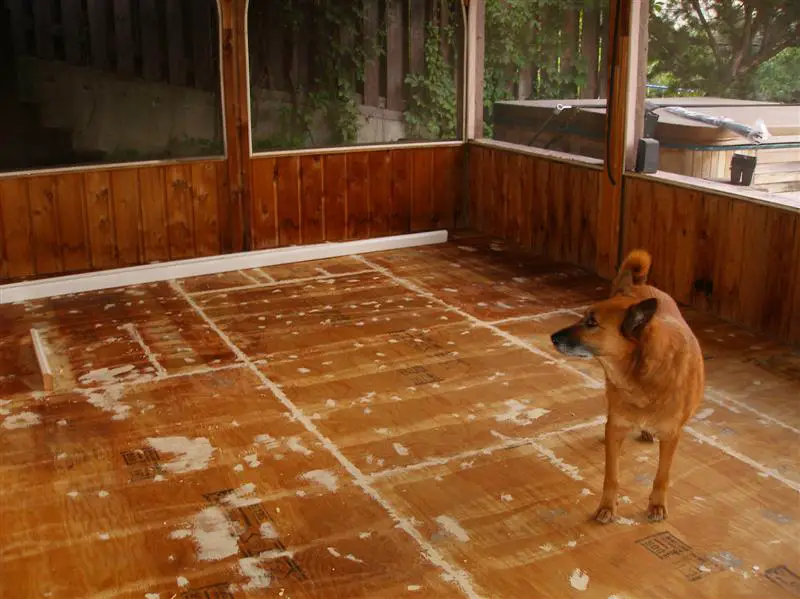
Basic tools in preparing wooden subfloors are:
- sander
- long level bar
- tape measure
- shop vac
- levelling compound
- circular saw
- drill and drill bits
- screws
- hammer and pry bar
- pencil
- moisture test kit or moisture meter
- vapor barrier
- utility knife
- chalk line
- safety glasses
- work gloves
- dust mask
- knee pads
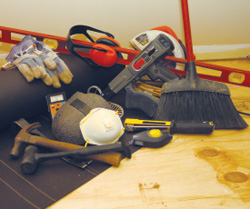
The tools list is not a complete list as the same may vary depending on the manufacturer’s instructions.
The basic steps in preparing wooden subfloors for hardwood flooring installation are:
- First, remove old flooring material and baseboards carefully if you intend to use the materials again.
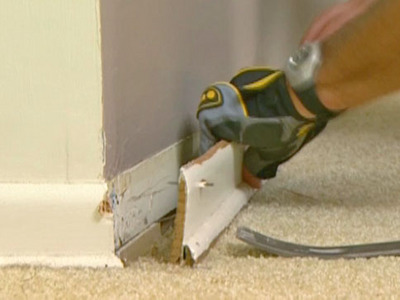
- Check doorways and door jambs or casing for clearance. If the height of the flooring won’t fit underneath, cut the resulting height of the flooring plus the expansion gap, usually 1/16 of an inch. The resulting height simply refers to the hardwood flooring board or plank with the underlay and vapor barrier, whichever the manufacturer requires. Mark the height on the door jambs or casing with a pencil and cut out the same using a miter saw or a hand saw. If the resulting floor will not fit underneath the door, remove the door and cut of ⅛ inches for it with a circular saw.
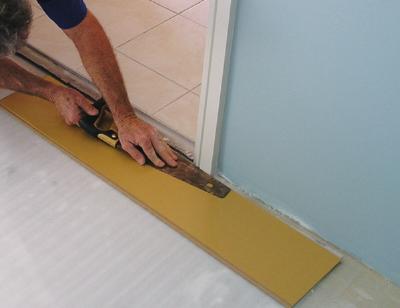
- If you’re planning a glue-down installation, be sure to sand the subfloor to remove debris from wax, old flooring glue residue or any type of coating that might affect traction. The same will also level down the subfloor’s surface. Otherwise, if the new flooring will be nailed down, then its okay to leave wax or coat on top of the subfloor as long as its sanded to be evened out.

- Use the long level bar and measuring tape to check if the floor is even. Sand out elevation and humps and apply levelling compound to low spots following manufacturer’s instructions and recommendations.

- Determine moisturization rate on the subfloor using a moisture test kit to identify if the subfloor is within the recommended limits for the product. If its not within the allowed or recommended range, be sure to consult with flooring professionals.

- Lay down vapor barrier and underlayment. Be sure that they overlap and secure the same with a stapler. Be sure to check with the manufacturer’s instructions as some products already have pre-attached underpads.

- Be sure that the subfloor is sturdy enough to support the hardwood flooring to be installed. Replace damaged boards and be sure to secure squeaky boards to the floor joists.

- The new flooring should be laid perpendicular to the floor joists. Should you choose to have it installed in the opposite direction, be sure to reinforce the subfloor.
- To make sure that our installation will remain straight, we better draw guidelines by marking the center of each wall and drawing a line across. Then from that line measure another line leaving behind the expansion gap. Next measure from that point parallel to the other end of the room to form a guideline from the starting wall.
There you have it, the wood subfloor is now ready for hardwood flooring installation.
Watch out for our next post for concrete subfloor preparation.


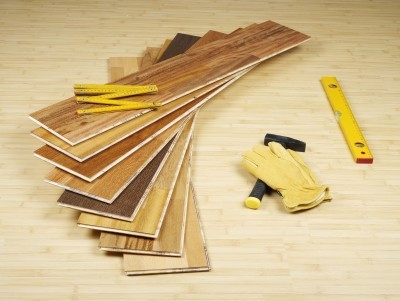 Again, don’t forget to check the manufacturer’s instructions before doing anything. Be sure to have the complete tools, some of which were mentioned earlier.
Again, don’t forget to check the manufacturer’s instructions before doing anything. Be sure to have the complete tools, some of which were mentioned earlier.
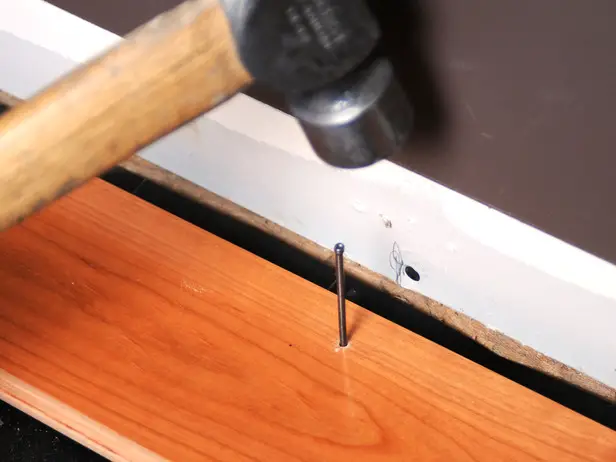


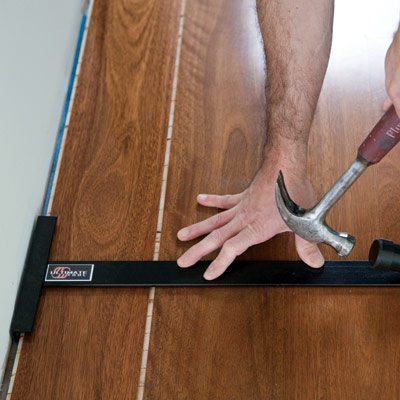
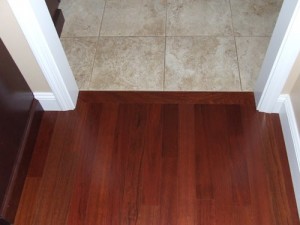
 There you have it, DIY hardwood flooring on a wood subfloor. Be sure to keep excess planks for future repairs and be sure to care for hardwood flooring to enjoy its rewarding comfort for years and years ahead.
There you have it, DIY hardwood flooring on a wood subfloor. Be sure to keep excess planks for future repairs and be sure to care for hardwood flooring to enjoy its rewarding comfort for years and years ahead.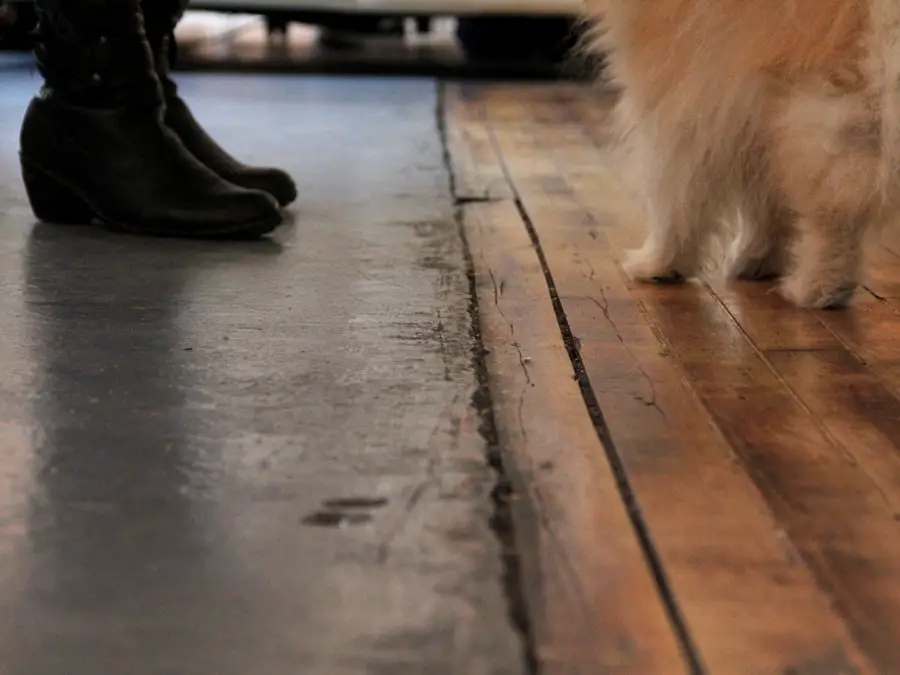 Yes, with the right preparation, cheap concrete subfloors are not just for basements anymore and it can work all throughout the house.
Yes, with the right preparation, cheap concrete subfloors are not just for basements anymore and it can work all throughout the house. Before installing the flooring planks, be sure to that the joists are in good condition and structurally sound as it will support the weight of the hardwood flooring and everything above it.
Before installing the flooring planks, be sure to that the joists are in good condition and structurally sound as it will support the weight of the hardwood flooring and everything above it. Treated Plywood. Over the last 30 years, using treated plywood has been a popular way to install hardwood flooring over concrete slab sub flooring. No, we don’t directly put the ¾” treated plywood over the bare concrete subfloor of course. We need to lay down underlayments first and ensure that the subfloor is free from moisture.
Treated Plywood. Over the last 30 years, using treated plywood has been a popular way to install hardwood flooring over concrete slab sub flooring. No, we don’t directly put the ¾” treated plywood over the bare concrete subfloor of course. We need to lay down underlayments first and ensure that the subfloor is free from moisture.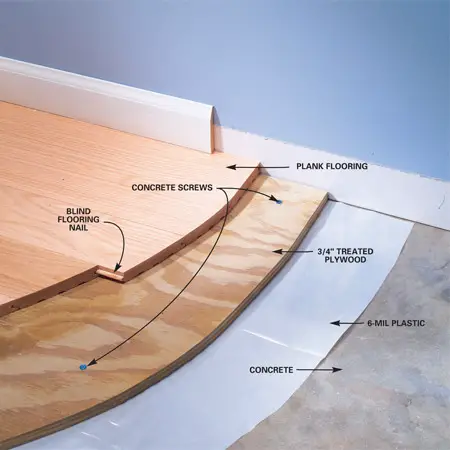 One more thing to keep in mind using the 3 methods we mentioned earlier is that they would significantly raise the height of the resulting floor. So if you are renovating a room or this is an entirely new project, you might want to check the doorways and furniture.
One more thing to keep in mind using the 3 methods we mentioned earlier is that they would significantly raise the height of the resulting floor. So if you are renovating a room or this is an entirely new project, you might want to check the doorways and furniture.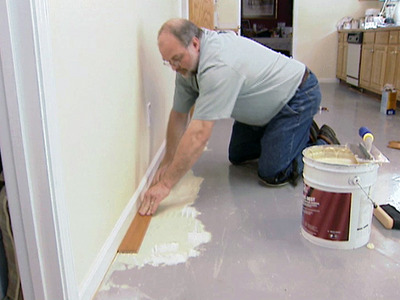 Continue doing so and be sure to stagger each flooring plank choosing hardwood flooring products from different boxes for a unique pattern. Apply builder’s tape on the planks so that they will be pulled tight and dry well. Doing this would also prevent them from slipping or being misplaced. Remember to allot space for the expansion gap.
Continue doing so and be sure to stagger each flooring plank choosing hardwood flooring products from different boxes for a unique pattern. Apply builder’s tape on the planks so that they will be pulled tight and dry well. Doing this would also prevent them from slipping or being misplaced. Remember to allot space for the expansion gap. Floating Floors. To demystify, floating floors are called as such for the simple reason that the hardwood flooring installed is not directly attached to the subfloor. Recent advances in manufacturing flooring boards and planks have given way to precision cutting, more accurately that the latest generation of hardwood, both engineered and solid and other wood-based flooring products like cork, bamboo and laminate have pristine click-lock technology enabling glueless locking.
Floating Floors. To demystify, floating floors are called as such for the simple reason that the hardwood flooring installed is not directly attached to the subfloor. Recent advances in manufacturing flooring boards and planks have given way to precision cutting, more accurately that the latest generation of hardwood, both engineered and solid and other wood-based flooring products like cork, bamboo and laminate have pristine click-lock technology enabling glueless locking. In the earlier days, of course glue was applied not to the subfloor but to the tongue and groove to secure each plank. These days though, that is seen less and less.
In the earlier days, of course glue was applied not to the subfloor but to the tongue and groove to secure each plank. These days though, that is seen less and less. To maintain the beauty of your hardwood flooring, be sure to clean it regularly and make sure repairs are done correctly.
To maintain the beauty of your hardwood flooring, be sure to clean it regularly and make sure repairs are done correctly. Again, it wouldn’t hurt to read manufacturer’s instructions for the flooring product before you begin preparation so that you’ll know immediately if there are specific requirements you need to achieve or comply with. At the same time, also check the local building codes in your area to avoid inconvenience.
Again, it wouldn’t hurt to read manufacturer’s instructions for the flooring product before you begin preparation so that you’ll know immediately if there are specific requirements you need to achieve or comply with. At the same time, also check the local building codes in your area to avoid inconvenience.

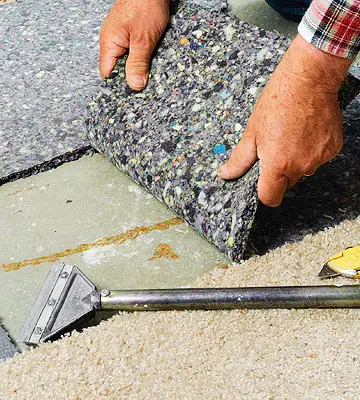



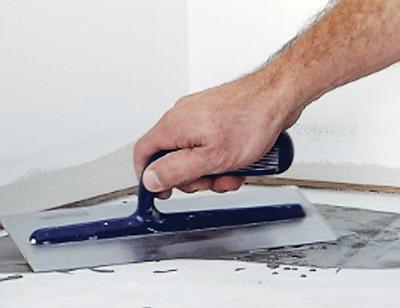
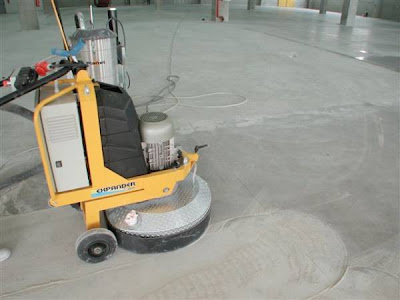

 That should get us ready to install your hardwood flooring on a concrete subfloor.
That should get us ready to install your hardwood flooring on a concrete subfloor.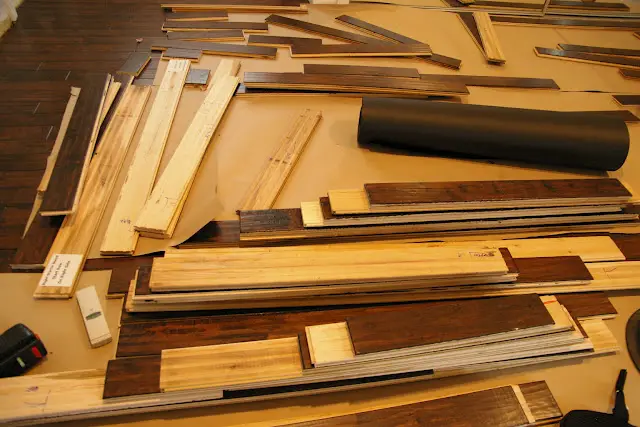 The first key is of course get the right hardwood flooring material that would flatter your living space and at the same time meet your needs. Some quick tips to get the right amount of hardwood flooring you need: first, measure the length and width of the room and multiply both quantities to get the square footage and then add 10% to the resulting product to allow for errors, waste and future repair.
The first key is of course get the right hardwood flooring material that would flatter your living space and at the same time meet your needs. Some quick tips to get the right amount of hardwood flooring you need: first, measure the length and width of the room and multiply both quantities to get the square footage and then add 10% to the resulting product to allow for errors, waste and future repair.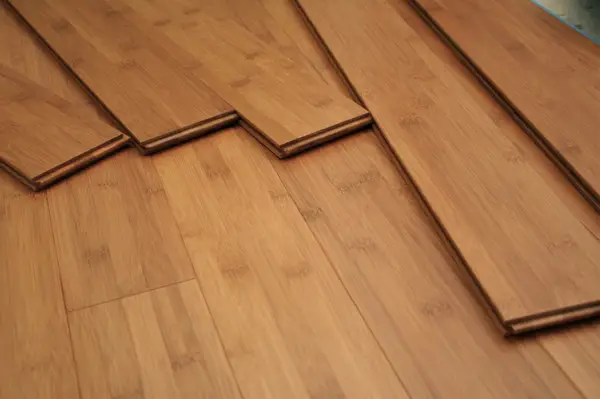 Keep in mind that when the hardwood flooring planks are delivered to you, you are not to install them the following day. Read on to see how to prepare the flooring material and the subfloor before installation and what skills and tools one would need to successfully execute a DIY hardwood flooring installation project.
Keep in mind that when the hardwood flooring planks are delivered to you, you are not to install them the following day. Read on to see how to prepare the flooring material and the subfloor before installation and what skills and tools one would need to successfully execute a DIY hardwood flooring installation project.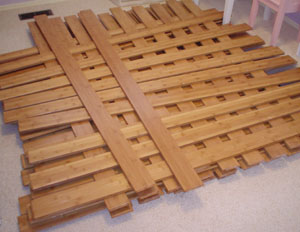 After the flooring products have been delivered, be sure to open the boxes and carefully examine each hardwood plank for any visual or material defect. Also it is very important to leave the hardwood planks in the room where it would be installed for at least 72 hours to let it acclimate to room’s natural humidity and temperature and give it time to naturally shrink or expand prior to installation.
After the flooring products have been delivered, be sure to open the boxes and carefully examine each hardwood plank for any visual or material defect. Also it is very important to leave the hardwood planks in the room where it would be installed for at least 72 hours to let it acclimate to room’s natural humidity and temperature and give it time to naturally shrink or expand prior to installation.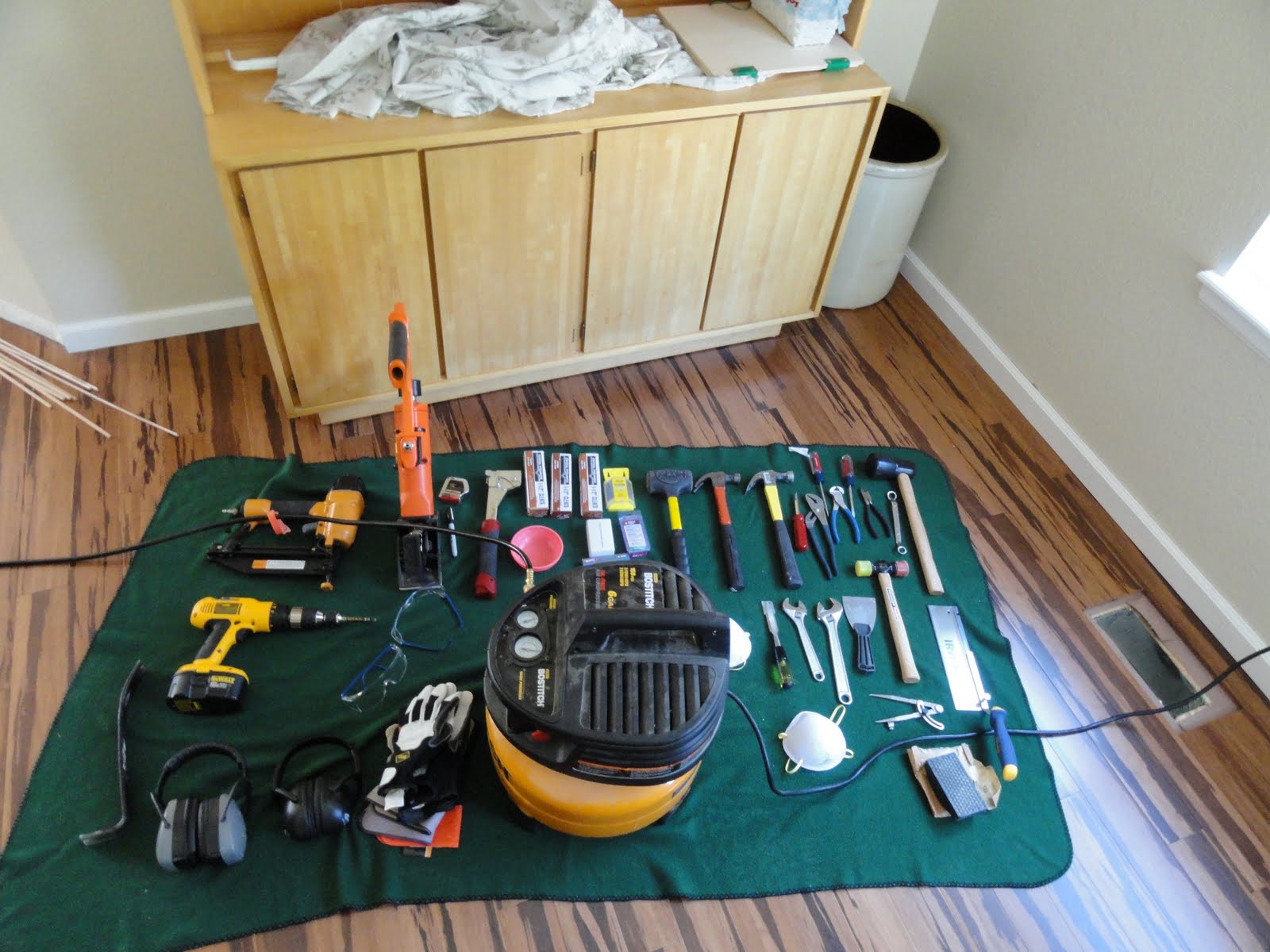 Common installation tools are:
Common installation tools are: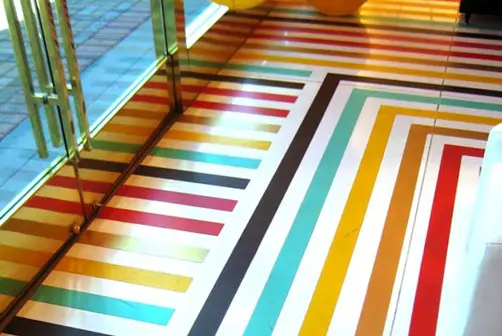 Today, we continue with our DIY flooring installation series and we’ll give you some points to consider should you decide to go out, buy vinyl and make the installation a weekend project.
Today, we continue with our DIY flooring installation series and we’ll give you some points to consider should you decide to go out, buy vinyl and make the installation a weekend project.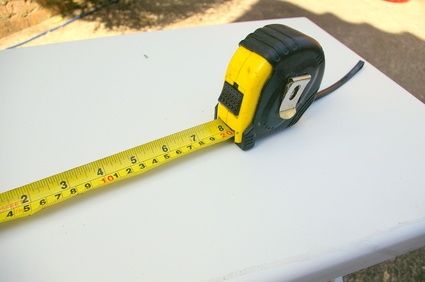 To do this, get the length and the width of the room then multiply the same to get the area of the room. Be sure to add at least 10 percent extra to have allowance for errors.
To do this, get the length and the width of the room then multiply the same to get the area of the room. Be sure to add at least 10 percent extra to have allowance for errors.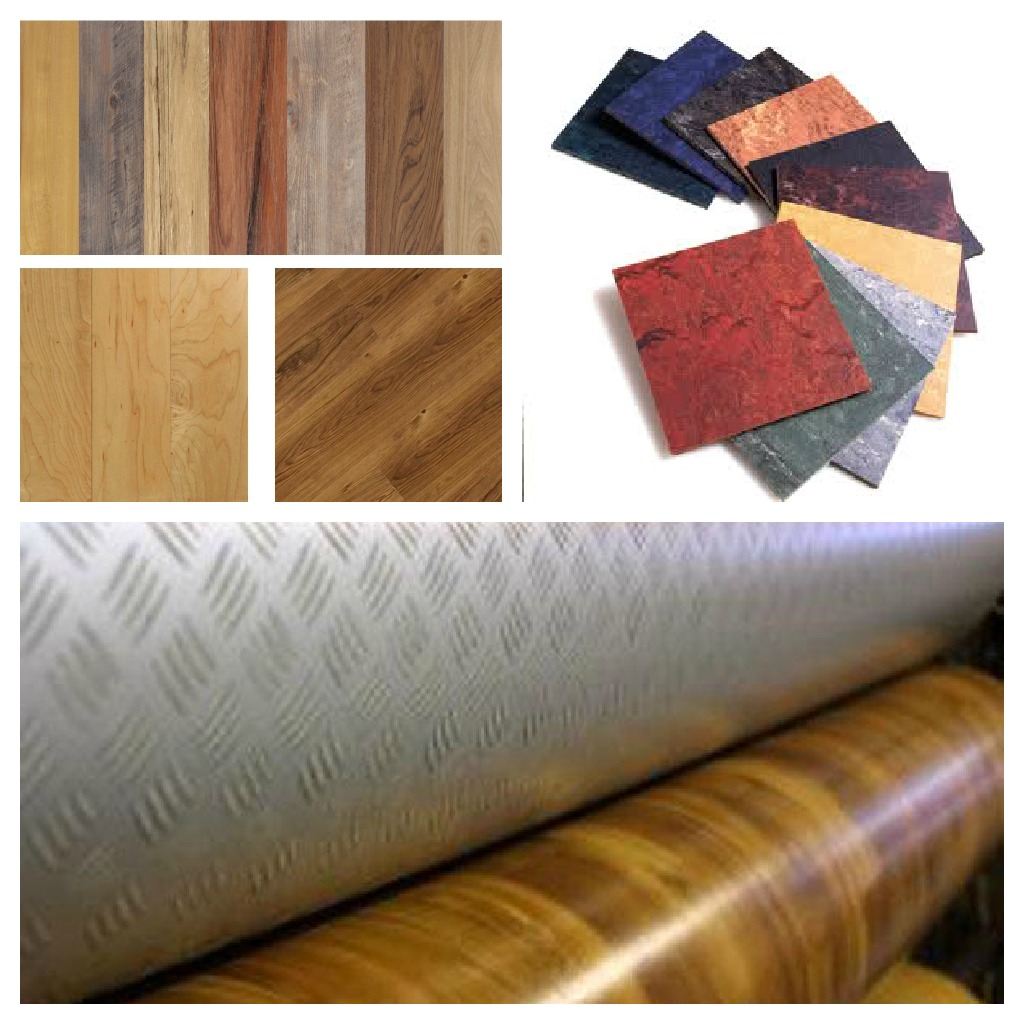
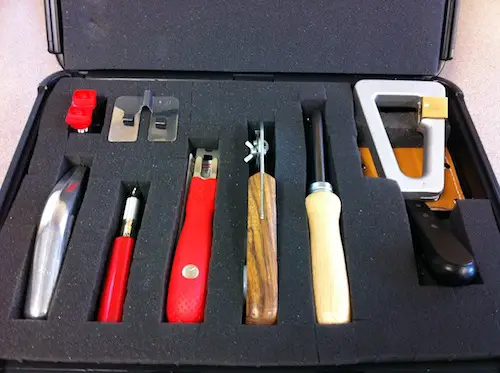 As it is with the quantity of the flooring products you need, tools do-it-yourselfers would need differ depending on the method of installation they intend to use.
As it is with the quantity of the flooring products you need, tools do-it-yourselfers would need differ depending on the method of installation they intend to use.
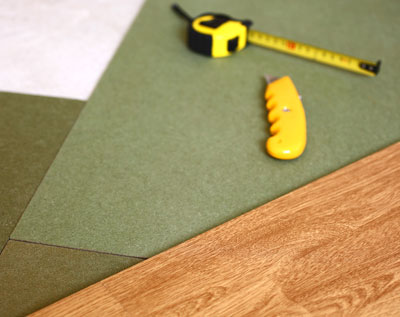
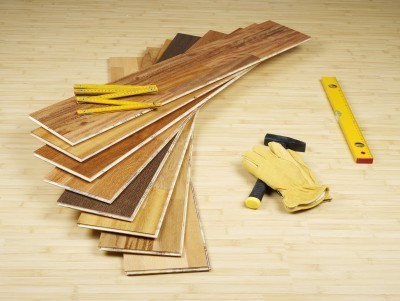 Whatever flooring product you choose, whether its laminate flooring, hardwood, porcelain and ceramic tiles, natural stones like granite, slate or marble, carpet tiles or other environmentally sound ones like glass, linoleum, bamboo or cork the most important thing is to make sure that the subfloor is prepared, protected from moisture and complete with the appropriate underlay or vapor barriers, recommended by the manufacturers of your product of choice.
Whatever flooring product you choose, whether its laminate flooring, hardwood, porcelain and ceramic tiles, natural stones like granite, slate or marble, carpet tiles or other environmentally sound ones like glass, linoleum, bamboo or cork the most important thing is to make sure that the subfloor is prepared, protected from moisture and complete with the appropriate underlay or vapor barriers, recommended by the manufacturers of your product of choice.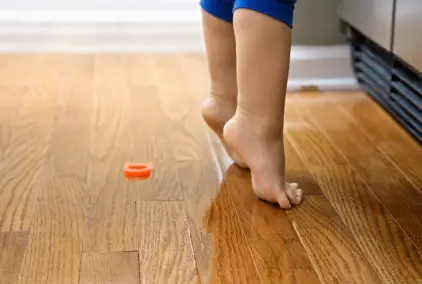
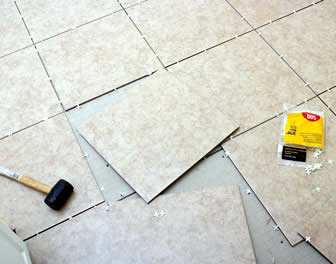 Speaking of tools, here are the ones needed in preparing the subfloor:
Speaking of tools, here are the ones needed in preparing the subfloor: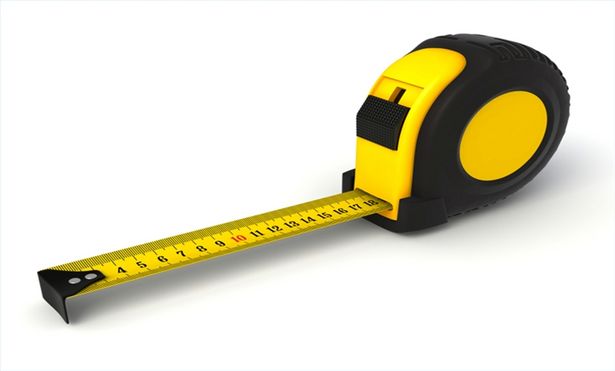 Remember these criteria that should be met before porcelain or ceramic tile flooring is installed: the subfloor should be 1) uniform and level; 2) in appropriate thickness; and 3) in overall good condition. Before proceeding with the preparation, it won’t hurt to check out the manufacturer’s instructions to make sure you take all the necessary steps. Also check out the building codes in your area to avoid any inconvenience.
Remember these criteria that should be met before porcelain or ceramic tile flooring is installed: the subfloor should be 1) uniform and level; 2) in appropriate thickness; and 3) in overall good condition. Before proceeding with the preparation, it won’t hurt to check out the manufacturer’s instructions to make sure you take all the necessary steps. Also check out the building codes in your area to avoid any inconvenience.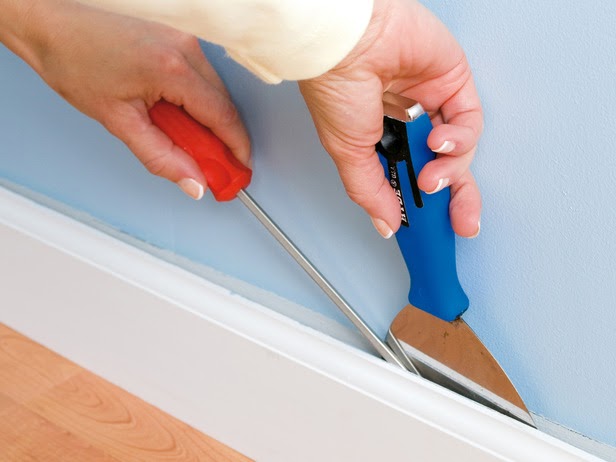 Another thing to consider is the resulting height of the flooring after installation. This will be crucial if you are planning to install the tile in the bathroom as the added elevation increases the chances of water spilling out. Keep in mind the height of furniture and other stuff as it is possible that the resulting floor will be more or less an inch higher.
Another thing to consider is the resulting height of the flooring after installation. This will be crucial if you are planning to install the tile in the bathroom as the added elevation increases the chances of water spilling out. Keep in mind the height of furniture and other stuff as it is possible that the resulting floor will be more or less an inch higher. When the subfloor is level, we are now ready to install our backerboards that will serve as a foundation for our ceramic or porcelain tile flooring. Apply the thin-set mortar on the subfloor, make sure to spread them in sections and its best to begin doing so in a corner. Lay down the backerboard and secure it in place with using corrosion resistant screws.
When the subfloor is level, we are now ready to install our backerboards that will serve as a foundation for our ceramic or porcelain tile flooring. Apply the thin-set mortar on the subfloor, make sure to spread them in sections and its best to begin doing so in a corner. Lay down the backerboard and secure it in place with using corrosion resistant screws.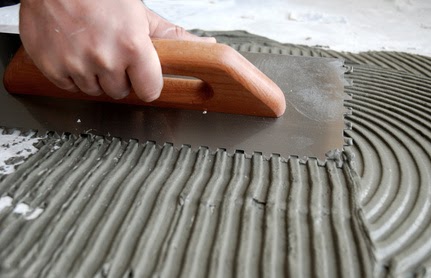 If you need to cut the board, simply score it with the utility knife and snap it. Be sure to cut it on the backside after it snaps to make sure you don’t damage the mesh.
If you need to cut the board, simply score it with the utility knife and snap it. Be sure to cut it on the backside after it snaps to make sure you don’t damage the mesh.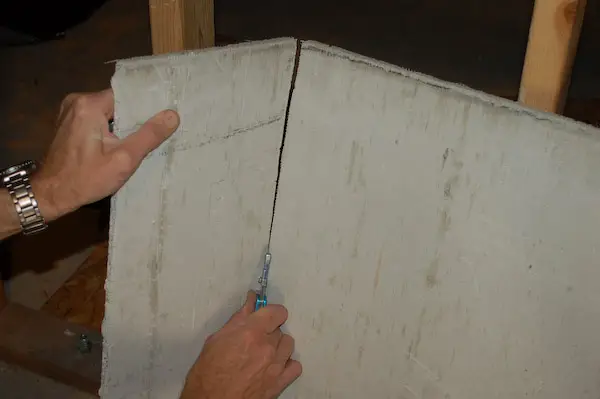 Continue with the thin-set application and backerboard layout until you have covered the entire room.
Continue with the thin-set application and backerboard layout until you have covered the entire room.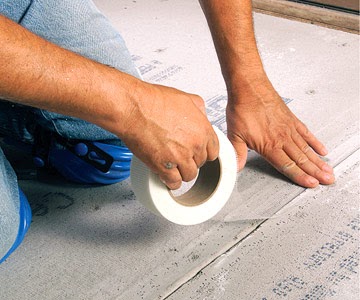 Cover the joints with cement board seam tape and apply mortar.
Cover the joints with cement board seam tape and apply mortar.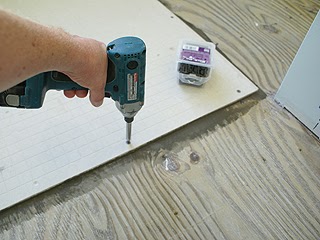
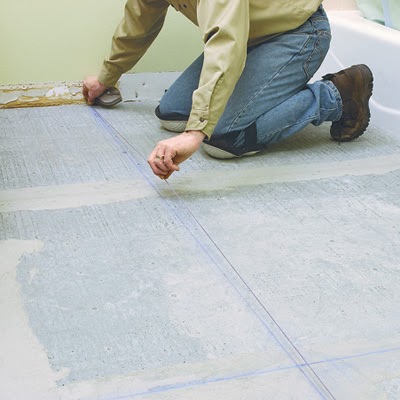 If the dry layout would leave a distance less than half the tile’s with at the end on one wall, move the layout by first adjusting the guidelines and leaving equal distance on each side.
If the dry layout would leave a distance less than half the tile’s with at the end on one wall, move the layout by first adjusting the guidelines and leaving equal distance on each side.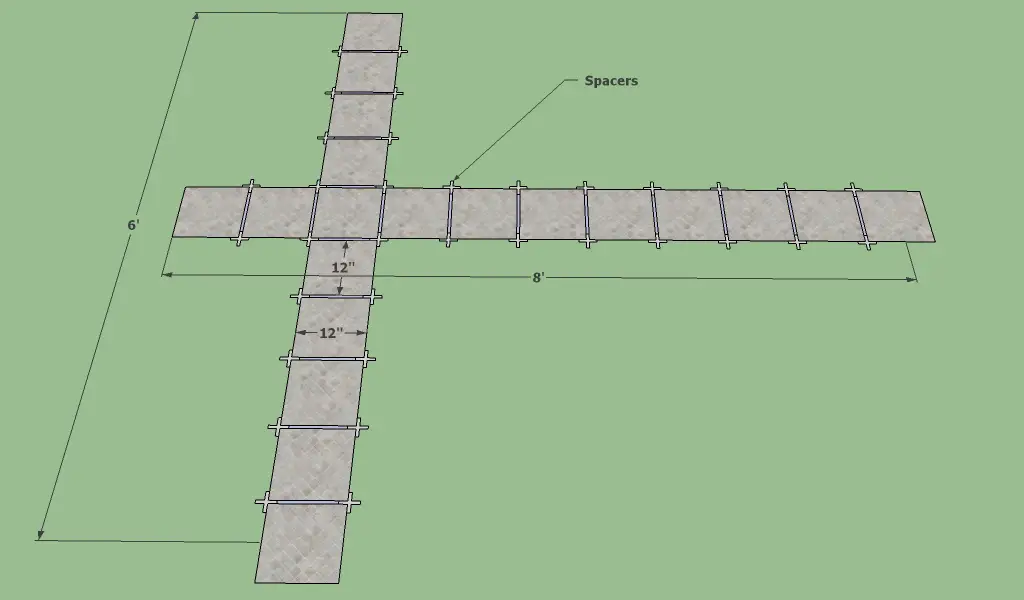 For larger areas, it is ideal to draw a grid of 3-foot squares across the room to make sure the layout will be even all throughout. Working in smaller section will make it more accurate and easier to make adjustments when needed.
For larger areas, it is ideal to draw a grid of 3-foot squares across the room to make sure the layout will be even all throughout. Working in smaller section will make it more accurate and easier to make adjustments when needed.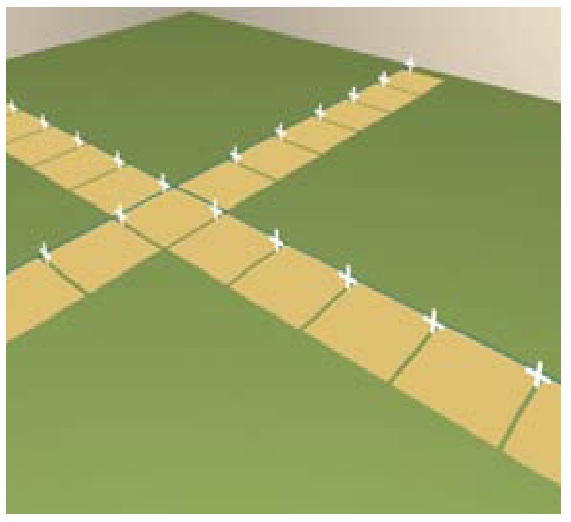 With the correct guidelines and a dry layout, we were able to see how the installation would look like. We are now ready to install the ceramic or porcelain tile flooring
With the correct guidelines and a dry layout, we were able to see how the installation would look like. We are now ready to install the ceramic or porcelain tile flooring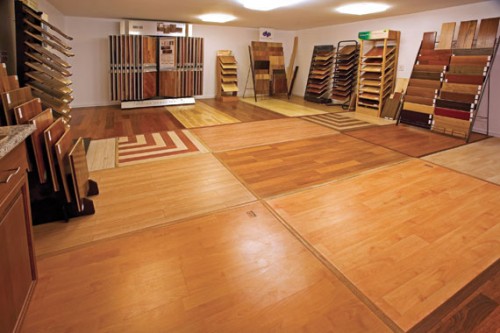 As it is with other flooring process, success depends on subfloor preparation and choosing the right flooring material. As we’ve mentioned earlier, linoleum has evolved into something not only trendier but also in form. We still have the classic linoleum sheets and the newer generation of linoleum tiles and floating ones.
As it is with other flooring process, success depends on subfloor preparation and choosing the right flooring material. As we’ve mentioned earlier, linoleum has evolved into something not only trendier but also in form. We still have the classic linoleum sheets and the newer generation of linoleum tiles and floating ones.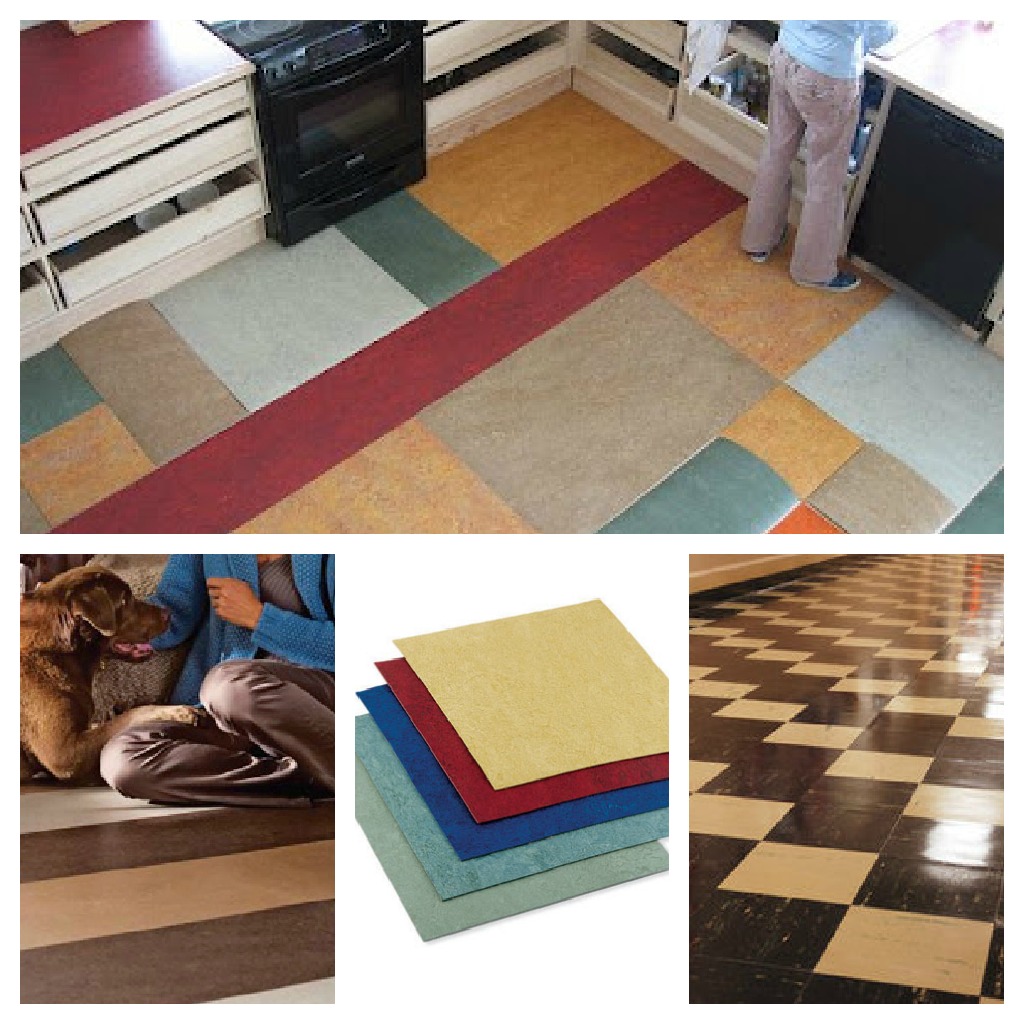 The tools needed will also depend on the type of installation the manufacturers recommend for different linoleum flooring products. Commonly used for installing linoleum sheets are:
The tools needed will also depend on the type of installation the manufacturers recommend for different linoleum flooring products. Commonly used for installing linoleum sheets are: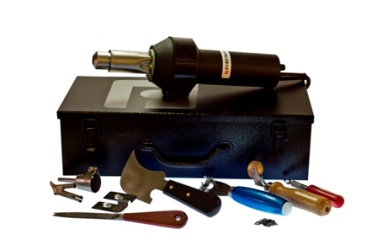 Finally, click and lock linoleum flooring would require the use of the following tools:
Finally, click and lock linoleum flooring would require the use of the following tools:
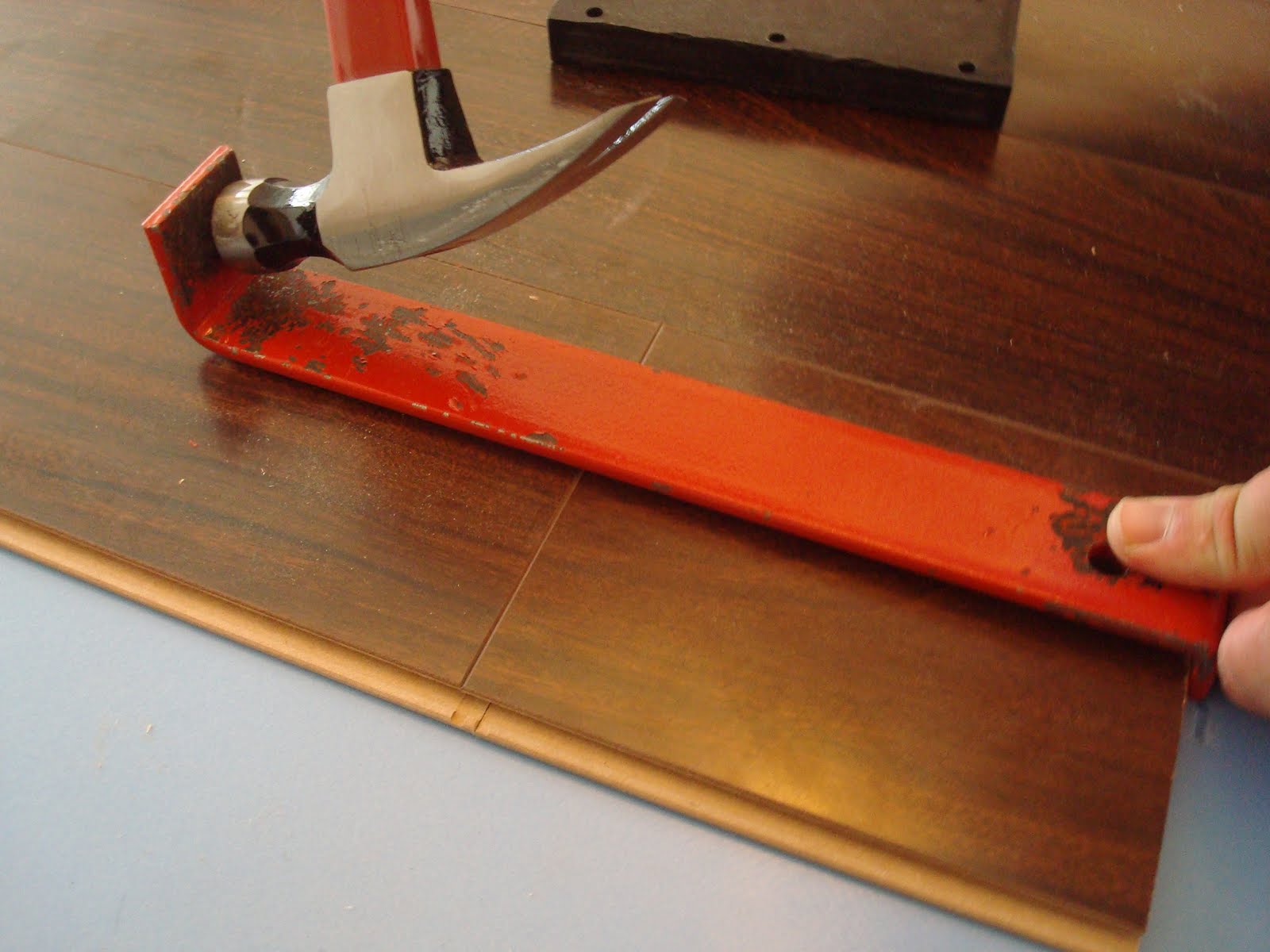 You may think that you’ve got everything you need and know absolutely everything you need to know about them and you’re probably about to go online or hit the nearest retailer in your area to get boxes and boxes of your perfect laminate flooring of choice…but you thought of something and stopped on your tracks: you realized you don’t know anyone who can install it and you’re not sure if you can do it.
You may think that you’ve got everything you need and know absolutely everything you need to know about them and you’re probably about to go online or hit the nearest retailer in your area to get boxes and boxes of your perfect laminate flooring of choice…but you thought of something and stopped on your tracks: you realized you don’t know anyone who can install it and you’re not sure if you can do it.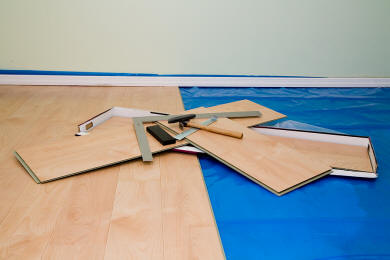 The next step is also critical. No matter what brand, with or without installation experience, one should always, always read the manufacturer’s installation instructions.
The next step is also critical. No matter what brand, with or without installation experience, one should always, always read the manufacturer’s installation instructions.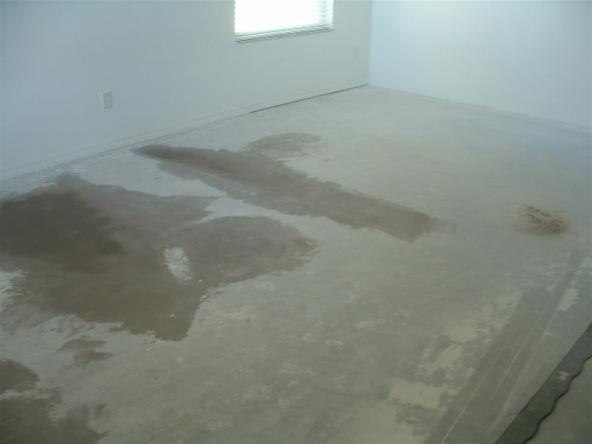 Don’t forget to measure the resulting flooring and make the necessary adjustments with your doors, trimmings, stairs and other transitions.
Don’t forget to measure the resulting flooring and make the necessary adjustments with your doors, trimmings, stairs and other transitions.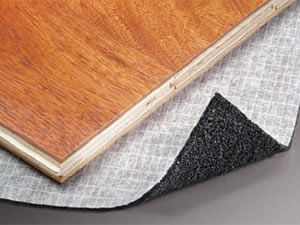 If you’re doing a major home makeover then ensure that all other jobs like carpentry and painting are all done before installing the laminate flooring to make sure that the surface are protected from unwanted scratches and stains. What’s the point of having a new floor when it’ll be less than perfect even before you get the chance to enjoy it?
If you’re doing a major home makeover then ensure that all other jobs like carpentry and painting are all done before installing the laminate flooring to make sure that the surface are protected from unwanted scratches and stains. What’s the point of having a new floor when it’ll be less than perfect even before you get the chance to enjoy it?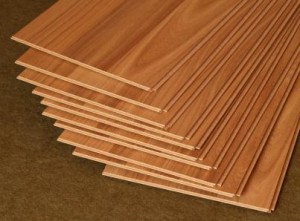 There you have it, the initial steps in preparing for a DIY laminate flooring installation. Watch out for part 2 for the step by step process and more tips.
There you have it, the initial steps in preparing for a DIY laminate flooring installation. Watch out for part 2 for the step by step process and more tips.